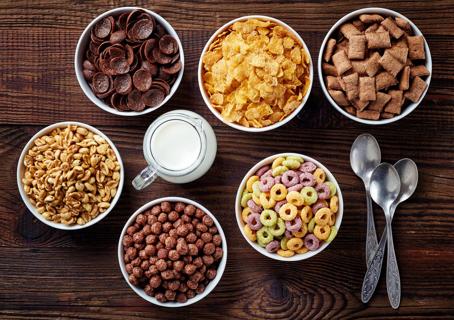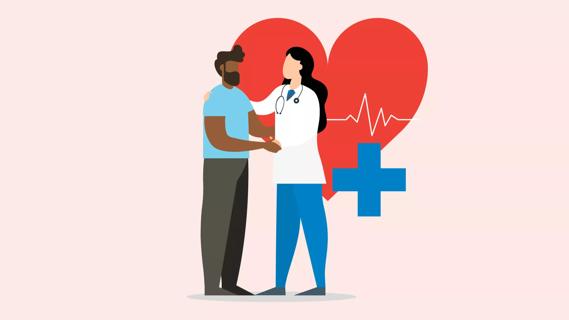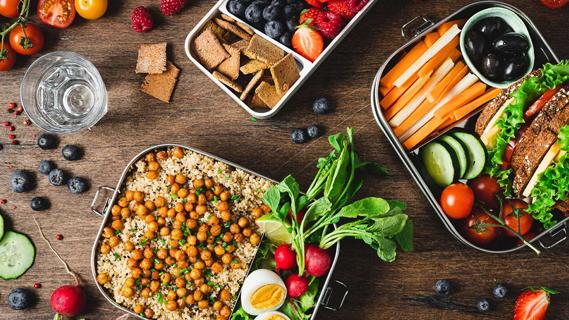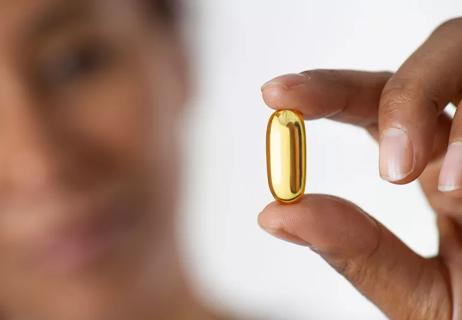Eating more natural, whole foods can lower your risk of heart and cardiovascular diseases

It’s often said that the way to someone’s heart is through their stomach. In many ways, those words couldn’t be truer.
Cleveland Clinic is a non-profit academic medical center. Advertising on our site helps support our mission. We do not endorse non-Cleveland Clinic products or services. Policy
What you eat has a direct effect on how your heart and cardiovascular system function. Diets built around certain foods can minimize your risk of heart disease and life-threatening cardiac events.
So, what should be on your grocery list to keep your ticker happy? Preventive cardiology registered dietitian Julia Zumpano, RD, LD, has some ideas.
Your heart is a pump that keeps blood moving through a 60,000-mile network of blood vessels in your body. With every heartbeat, blood gets pushed through this intricate system to deliver oxygen and nutrients to organs and tissues.
Maintaining this blood flow is critical to … well, your very life, notes Zumpano. This brings us to your diet, as what you put on your plate can determine how easily blood flows through your cardiovascular system.
Regularly eating less-than-healthy food high in saturated fats and trans fats can raise your blood cholesterol. High cholesterol can lead to a buildup of plaque in your arteries that increases your risk of a heart attack or stroke.
To use a plumbing analogy, eating healthier foods tends to keep your pipes clean. Filling up on greasy grub can create clogs.
“It’s really key to understand how what you eat affects your body,” says Zumpano. “You can definitely reduce your risk of developing cardiovascular disease by eating certain foods every day.”
Keeping your arteries from getting gummed up starts with putting certain foods in your shopping cart. Here are dozens of targets for the next time you hit the grocery store.
Omega-3 fatty acids may not sound like something good for your ticker, but don’t be fooled by the name: This essential nutrient is a “healthy fat” that is a powerhouse when it comes to heart health.
Omega-3s work to protect against artery plaque buildup by lowering triglyceride levels and increasing high-density lipoprotein (HDL) cholesterol in your blood. (HDL cholesterol is considered “good” cholesterol.)
Certain types of fish are swimming in omega-3, says Zumpano. Top from-the-seas sources of it include:
Dietary Guidelines for Americans (2020-2025) published by the U.S. Department of Agriculture recommends that adults eat 8 ounces of seafood per week as part of a healthy diet.
(It should also be noted that some fish contain higher levels of mercury, which can bring risks depending upon your age and health. The U.S. Food and Drug Administration [FDA] offers a list of best fish choices to limit mercury exposure.)
Getting omega-3 into your diet doesn’t have to require a fishing rod. You can find it on land, too.
Walnuts offer a healthy dose of the plant-based version of omega-3 fatty acid called alpha-linolenic acid (ALA). A variety of seeds also offer the anti-inflammatory benefits of ALA, including:
But while walnuts and those seeds are packed with healthy fats, those are still fats that are high in calories. So, pay attention to serving size, cautions Zumpano. It’s best to look for unsalted options, too.
Berries may be small, but they can have a BIG impact on heart health.
For starters, berries are chock full of phytonutrients, says Zumpano. These powerful antioxidants can prevent damage to cells in your body (and heart) while also reducing inflammation that restricts blood flow and raises blood pressure.
Fiber in berries also may help lower cholesterol by reducing your levels of low-density lipoprotein (LDL), otherwise known as “bad” cholesterol.
Popular heart-healthy berry options include:
As long as you’re shopping for berries in the produce aisle, research shows that many other fruits also can protect your heart. The list includes:
The humble oat is a rockstar when it comes to protecting your heart. In fact, making a bowl of oatmeal a regular breakfast choice can help lower your total cholesterol and “bad” LDL cholesterol, says Zumpano.
The positive effect can come quickly, too. One study showed that people saw significant changes in their cholesterol after just six weeks of working oats into their daily diet.
Consider using more of these heart-healthy whole grains, too:
Beans check a lot of boxes when it comes to nutritional value. Whatever legume you prefer ― lentils, for instance, or maybe garbanzo, pinto, kidney or black beans ― you’ll be doing your heart a favor with every bite.
Studies show that consuming legumes can act as a positive force on blood pressure and cholesterol, two factors in cardiovascular disease.
Substituting soy-based food such as tofu or edamame beans for “animal protein” ― OK, meat ― can help lower cholesterol levels while also providing other protective benefits, says Zumpano.
“Eating the rainbow” is a colorful phrase often used to encourage healthy food choices. But this isn’t just an artistic suggestion Each hue also brings different phytonutrients and antioxidants to the table to boost heart health.
So, get some orange onto your plate! (Carrots, sweet potatoes or acorn squash, for instance.) Work some reds into the meal! (Tomatoes and beets). Add a bright dash of yellow! (Yellow peppers.)
And of course, don’t forget your leafy greens! Nitrates in salad building blocks such as lettuce, spinach, kale, collard greens and Swiss chard can keep arteries relaxed and open for better blood flow.
Surprised to see this treat on the list? Well, dark chocolate earns a seat at the table with other expected heart-healthy foods.
Dark chocolate is teeming with beneficial antioxidants called flavonoids, which can help improve blood flow and blood pressure by relaxing your blood vessels, says Zumpano. These flavanols also fight cell damage.
Aim to eat dark chocolate products that are at least 70% dark chocolate to get the benefits. (The higher the percentage, the more flavonoids.)
Remember, though, that dark chocolate should still be considered a treat despite its positives. Moderation is key given the saturated fat content. (In other words, don’t plan on dark chocolate being your main course at dinner.)
And what about other types of chocolate? Sorry … they don’t make the heart-healthy list. Both milk chocolate and white chocolate have far more sugar and fat and fewer flavonoids than their dark candy cousin.
Is diet the only factor when it comes to heart disease? Absolutely. Genetics can play a role. Ditto for illnesses, infections and medications. The wear and tear that comes with age can be a factor, too.
But what you eat is something you can control. “The food choices we make can make a big difference for your heart,” stresses Zumpano.
Many of the foods mentioned above are pillars of the Mediterranean diet, an eating plan that emphasizes plant-based yummies and healthy fats. The diet is considered the gold standard when it comes to heart health.
If you’re interested in making eating changes, start small, suggests Zumpano. Work in one or two “heart-healthy” items a week as you make meals. A few simple swaps ― like subbing an apple for a cookie at snack time ― can bring positive changes over time.
“We eat multiple times every day,” says Zumpano. “That gives us a lot of opportunity to help our hearts.”
Learn more about our editorial process.

There are better breakfast options, but if it’s got to be cereal, look for whole grains, high fiber and no added sugar

Having underweight, having overweight and having obesity can be dangerous for your heart

Your natural estrogen levels support a healthy heart by improving your cholesterol, increasing blood flow and reducing free radicals

No more scrambling to figure out what to eat during your busy week

Set yourself up for success by carefully choosing your recipes, storage containers and prepping day

Knowing what you can do to prevent or manage heart disease is half the battle

When nutritious foods are hard to come by, your health can suffer

Research shows that high doses of vitamin D do nothing to lower your cardiovascular risk

Your metabolism may torch 1,300 to 2,000 calories daily with no activity

A gentle touch in all the right places may help drain your sinuses